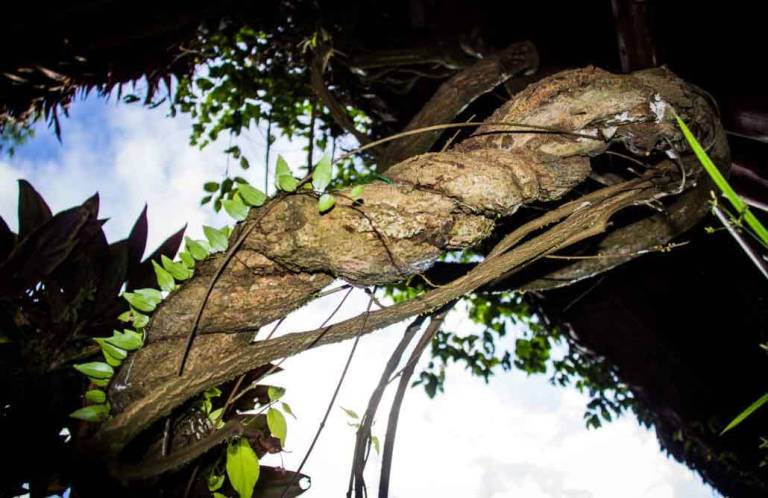The Amazon jungle holds many secrets, one of which is the drink with a thousand-year history, ayahuasca. “Vine of spirits”, “liana of the dead” – no one will remember how the Indians of Peru combined 2 plants: chacruna and ayahuasca liana, but for more than 6 thousand years Amazonian curanderos healers have been treating not only bodily problems, but how they They also claim mental illness.


The main drink of life
Entheogen and hallucinogen. A decoction that contained a “spirit molecule” 1,000 years before humanity learned of the existence of not only DMT (dimethyltryptamine), but molecules as such. Ayahuasca, yahe, daimyo and 39 other less popular names, none of which are able to convey the power contained in this drink. Formally, it is a decoction of the “spirit vine” (Banisteriopsis caapi) and chacruna (Psychotria viridis or Diplopterys cabrerana), which plunges a person into a psychedelic trip lasting from 4 to 6 hours. In fact, it is a drink that allows you to interact with the spirit of the “maestro” Banisteriopsis caapi, see the true essence of things, heal the mind and body, find answers to any questions and achieve what is commonly called enlightenment.
Ayahuasca was discovered by the Quechua, one of the indigenous peoples of the Amazon, who were ahead of the Mayans and Aztecs in cultural and state development. They carried the magic of this decoction through the centuries and are still faithful to Pachamama (Mother Earth) and vegetarian traditions. Neither the spears of the conquistadors, nor the fires of the Jesuit inquisitors, nor propaganda, nor the state machines that banned the sacred drink in almost all countries broke them. Despite everything, the truth is: from the mid-20th century to the present day, ayahuasca has experienced a real renaissance. Select people from all over the world travel a long way to the Amazon jungle to undergo a ceremony with a real shaman.
The tradition of using psychoactive substances in vegetalistic rituals is even older. Smoking pipes, herbal powders and containers for their storage, discovered by archaeologists in the territory of modern Ecuador, indicate that as early as 1500-2000 BC. The Indians used coca, mapacho and certain ingredients of ayahuasca. History has left no evidence that shamans brewed it in these times, but interaction with teacher plants was, without a doubt, already practiced.
Modern life
For official science, the year of “birth” of ayahuasca is 1851. It was this year that the English botanist Richard Spruce first documented how the Tucano Indians consumed a hallucinogenic decoction of a vine, which did not even have a scientific name at that time. Spruce gave it to her – “Banisteria caapi”. 80 years later, in 1931, the “spirit liana” acquired its modern botanical name – “Banisteriopsis caapi”.
In 1967, during the Summer of Love, the US government held a symposium called the Ethnopharmacologic Search for Psychoactive Drugs. This event brought together world luminaries of ethnobotany, chemistry and medicine. Over the next few years, humanity learned about the biochemical mechanisms of ayahuasca’s effects on the body. As the hippie movement began to decline and the government began to tighten the screws on everything related to psychedelic substances, research into ayahuasca slowed down, but the number of its adherents only increased.
In the mid-1980s, Colombian anthropologist and psychedelic drug researcher Luis Eduardo Luna scientifically substantiated the need for a preparatory diet before an ayahuasca ceremony and introduced the term “teacher plants” into official science. Since then, the world has received convincing evidence that a decoction of the “spirit creeper” is effective against treatment-resistant depression, opiate, alcohol and tobacco addictions, post-traumatic stress disorder (PTSD), Alzheimer’s disease and even some forms of cancer. And the number of people visiting South America for the sole purpose of undergoing an ayahuasca ceremony is steadily growing from year to year.



